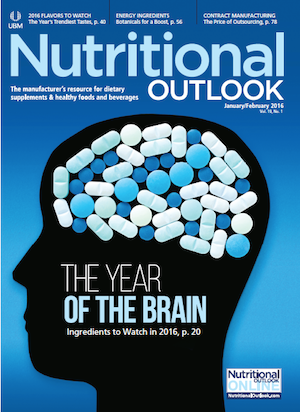2016 Ingredient Trends to Watch for Food, Drinks, and Dietary Supplements: Egg Replacers
Although the worst days of the egg crisis may have passed, many of the innovations it inspired will soon be making their debut.
Photo © iStockphoto.com/Dominik Pabis

The avian influenza outbreak made headlines in 2015 for prompting a U.S. egg shortage, but it could continue to have a big impact on egg-replacement ingredients in the year ahead. Although the worst days of the egg crisis may have passed, many of the innovations it inspired will soon be making their debut.
“Projects started in summer 2015 during the height of the crisis might not be completed and launched until sometime in 2016,” says Jon Stratford, sales and marketing manager, Natural Products Inc. (Grinnell, IA). “Food makers who made a strategic commitment to reducing their reliance upon eggs may continue their R&D and launch (or re-launch) their reduced-egg products well into 2016.”
Stratford sees soy-based ingredients as some of the most exciting under development in this category, such as spray-dried soymilk powder to replace egg whites in baking applications. He also points out the flurry of activity surrounding new applications for old egg-replacer ingredients, such as emulsifiers, starches, gums, and proteins.
Proposed regulations to require more cage space for laying chickens could also impact the price of eggs and prompt formulators to look toward egg alternatives this year, suggests Mike Buttshaw, vice president of ingredients sales and marketing, MGP Ingredients (Atchison, KS). He says MGP’s Arise line of wheat protein isolates offers especially dependable replacements for egg whites in many applications.
“The majority of egg-containing food products are flour-based foods (bakery, pasta, and noodles), which makes Arise wheat protein isolates compatible in those food systems in terms of functionality, labeling, and applicability for vegetarian/vegan diets,” says Buttshaw.
Then again, the avian flu epidemic has largely been managed, so 2016 may not be as big of a year for egg replacers as 2015, suggests Ricardo Rodriguez, marketing manager of confectionery & bakery at Ingredion (Westchester, IL). However, Rodriguez believes consumer awareness of egg replacers has increased and the “free-from” movement will continue to drive demand for allergen-free ingredients like egg replacers.
“I do believe that some companies that were forced to look at [egg] alternatives will in fact stay with them, because they worked well,” says Rodriguez.
Rodriguez sees pulse-based ingredients among the next generation of egg-replacer ingredients, such as Ingredion’s Vitessence pulse proteins and Homecraft pulse flours. He says the pulse-based ingredients work well on their own as egg replacers or in combination with other products, such as Ingredion’s Precisa Bake 100 texturizing system, which further extends the egg-replacement capabilities while preserving texture and taste.
Algae may be another simple and cost-effective egg substitute in certain applications. Microalgae firm Solazyme (San Francisco, CA) says its AlgaVia whole algal flour is ideal for maintaining the indulgent mouthfeel provided by eggs and dairy fats in products like ice cream and alfredo sauce.
But there may still be applications when only real eggs will do the job.
“Eggs provide better flavoring, better functionality, consistent performance, consumer familiarity, and a clean label,” says egg supplier Rembrandt Foods (Spirit Lake, IA). “Replacers often function on a basic level, but fall short when compared to the expectations of using real eggs.”
During the egg crisis, Rembrandt created “egg extenders” that blended real eggs with other functional ingredients to stretch the diminished egg supply a little further. The egg extenders were meant to be used as a 1-to-1 substitute for standard eggs, while providing the taste, aroma, and coloring typical of standard dried egg products, according to Rembrandt.
READ NEXT
Ingredients to Watch 2016: Probiotics
Read more:
Gum–Starch Blend Is “Clean” Replacer for Eggs, Fat
2016 Ingredient Trends to Watch: Omega-3
Michael Crane
Associate Editor
Nutritional Outlook Magazine
michael.crane@ubm.com

Prinova acquires Aplinova to further increase its footprint in Latin America
April 7th 2025Prinova has recently announced the acquisition of Brazilian ingredients distributor Aplinova, which is a provider of specialty ingredients for a range of market segments that include food, beverage, supplements, and personal care.

























